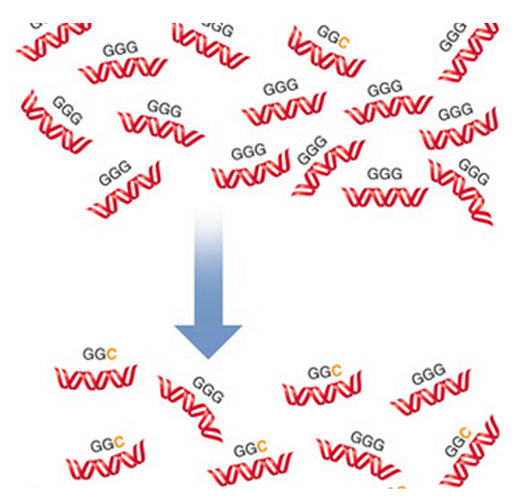Which latitude is most likely to have a desert?
a. 30? north and south
b. 30? east and west
c. 45? north and south
d. 50? north and south
e. 70? north and south
A
You might also like to view...
GGG and GGC are codons for the amino acid, glycine. A mutation caused the insertion of a cytosine in place of the guanine during DNA replication. Over many generations the DNA changes so that the frequency of GGC is similar to that of GGG. What effect does this mutation have on the population's mean fitness?

A. As the frequency of the GGC codon increases, the population's mean fitness level will remain the same.
B. As the frequency of the GGC codon increases, the population's mean fitness level will initially increase, but once GGC and GGG occur with equal frequency, the mean fitness will decrease.
C. As the frequency of the GGC codon increases, the population's mean fitness level will decrease.
D. As the frequency of the GGC codon increases, the population's mean fitness level will increase.
How does cAMP regulate levels of glucose in mammals?
What will be an ideal response?
If the DNA triplets were ATG?CGT, the tRNA anticodons would be
a. AUG?CGU. b. ATG?CGT. c. UAC?GCA. d. UAG?CGU. e. CGT-ATG.
Which of these statements is not true of antibody molecules?
A) Cell-bound antibody molecules can bind cells that in turn release chemical compounds that damage parasitic worms. B) Antibody molecules can enhance phagocytosis of the antigen. C) Cell-bound antibody molecules can initiate a process that results in cell lysis. D) Cell-bound antibody molecules can bind complement, triggering the complement cascade. E) Antibody molecules can directly destroy antigen.